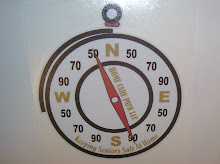DRA is the Deficit Reduction Act of 2005, signed in to law by President Bush on February 8, 2006. This legislation effects the assets transfer provisions for seniors seeking to qualify for Medicaid coverage. This is written to give the reader a frame work for the transfer of assets penalty.
The transfer of assets penalty is a period of time during which the senior transferring the assets will be ineligible for medicaid. The formula is the amount transferred devided by the monthly nursing home cost. So if the senior transfers 50 thousand dollars and the average monthly private pay cost is 5 thousand dollars , 50k devided by 5k equals a period of 10 months in which the senior would be ineligible for Medicaid.
Secondly it is important to understand when the penalty created by the transfer begins. Under the Deficit Reduction Act (DRA) of 2005 the 10 month penalty period will not begin until (A) the senior has moved to a nursing home (B) the senior has spent down to the asset limit for Medicaid eligibility (C) the senior has applied for medicaid coverage (D) the senior has been approved for Medicaid coverage, but for the transfer.
So if the senior transfers 50k on January 1, 2010, and then moves in to a nursing home on January 1, 2011, and spends down to Medicaid eligibility on January 1, 2012, that is when the 10 month penalty period will begin, and it will not end until December 1, 2012.
This is written to give readers a sense of the way the (DRA) Deficit Reduction Act effects the transfer of assets penalty. Home Care Path www.homecarepath.com encourages seniors to consult with an Elder Law Professional prior to transferring assets.
Wednesday, July 20, 2011
Subscribe to:
Post Comments (Atom)

No comments:
Post a Comment